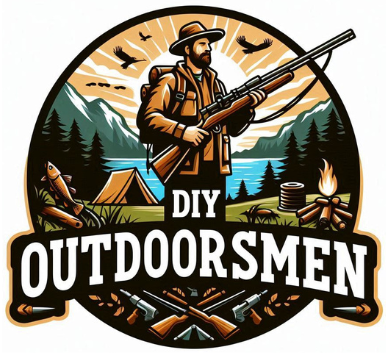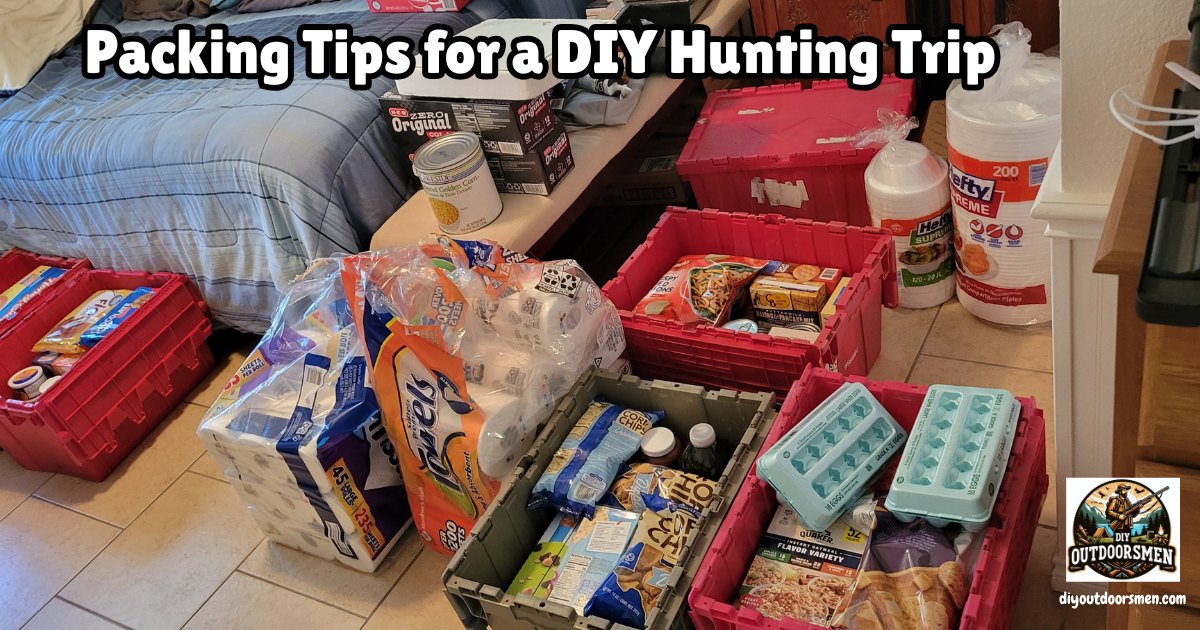Contents
- 1 Essential Hunting Gear is The Backbone of Your Adventure
- 2 Navigating the Wilderness by Using Maps and Navigation Tools
- 3 Hunting Clothing and Dressing for Success
- 4 Overnight Gear Essentials for Making the Wild Your Temporary Home
- 5 Emergency and Survival Gear Where Safety Meets Preparedness
- 6 Health and Comfort for Staying Sane in the Wilderness
- 7 The Importance of a Packing List for Cultivating a Well-Planned Hunt
Planning an upcoming hunting trip can be thrilling yet overwhelming. You can begin with a solid packing list that includes every aspect of your trip. Getting organized is the secret weapon to not just surviving but thriving in the wild.
QUICK LOOK: Hunting Gear Packing List Essentials
- Start with navigation tools like a detailed map and a trusty compass or GPS. These are your best friends in the wilderness, keeping you on track and helping navigate unfamiliar terrain. Technology can fail, so knowing how to read a map and use a compass is an invaluable skill.
- Blaze orange tape isn’t just for safety; it’s also a neat trick for route marking, keeping you oriented, and reducing your risk of getting lost. Hanging tape at key points can guide you back out and reassure anyone accompanying you.
- Hunting tools like decoys and game calls are vital for a successful trip. These tools aren’t just for show; they increase your chances of a fruitful hunt. Pairing them with the right scent eliminators and attractors creates conditions for an encounter with your target quarry while minimizing your scent footprint.
- Your hunting pack is more than just a carryall; it’s your lifeline. Choose one that balances storage space with comfort and convenience, as you’ll rely on it to store necessary items like water bottles or hydration bladders. Staying hydrated is often underprioritized but essential for maintaining energy during long days out.
- Don’t forget some practical extras like a cooler for game storage and odorless insect repellent to make your trip more comfortable. Equipment like ground blinds or portable tree stands can enhance your strategic approach, offering concealment when you need it.
The key to a successful hunt starts with understanding what you need. Think of your checklist as an inventory of essentials, from gear and emergency supplies to clothing and food provisions. It ensures you’re well-prepared to tackle unforeseen challenges nature throws your way.
This list isn’t just for beginners—seasoned hunters also leverage lists to avoid last-minute scrambles. Packing the right equipment, like a sturdy hunting pack, maps, and reliable navigation tools, can easily turn a potential misadventure into a memorable outing.
Safety is paramount. Consider items like blaze orange tape for visibility, decoys, scent attractors, and scent eliminators to enhance your strategic approach to the hunt. These gears and tools aren’t just extras; they can make a pivotal difference.
Moreover, don’t underestimate the power of preparation. A well-packed hunting pack with essentials like a water bottle or hydration bladder ensures you stay hydrated and ready, especially when covering tricky terrains.
Remember, this checklist is your guide to a hassle-free hunting experience. Tailor it to your needs, adapt it for different environments, and it’ll not only keep you organized but also boost your confidence as you venture into the wild.
Essential Hunting Gear is The Backbone of Your Adventure
Setting off on a hunting trip without the right gear is a recipe for trouble. Gear is the backbone that supports your outdoor adventure, ensuring safety, efficiency, and success. Whether you’re a veteran hunter or just starting, having the essential tools makes all the difference.
- Start with navigation tools like a detailed map and a trusty compass or GPS. These are your best friends in the wilderness, keeping you on track and helping navigate unfamiliar terrain. Technology can fail, so knowing how to read a map and use a compass is an invaluable skill.
- Blaze orange tape isn’t just for safety; it’s also a neat trick for route marking, keeping you oriented, and reducing your risk of getting lost. Hanging tape at key points can guide you back out and reassure anyone accompanying you.
- Hunting tools like decoys and game calls are vital for a successful trip. These tools aren’t just for show; they increase your chances of a fruitful hunt. Pairing them with the right scent eliminators and attractors creates conditions for an encounter with your target quarry while minimizing your scent footprint.
- Your hunting pack is more than just a carryall; it’s your lifeline. Choose one that balances storage space with comfort and convenience, as you’ll rely on it to store necessary items like water bottles or hydration bladders. Staying hydrated is often underprioritized but essential for maintaining energy during long days out.
- Don’t forget some practical extras like a cooler for game storage and odorless insect repellent to make your trip more comfortable. Equipment like ground blinds or portable tree stands can enhance your strategic approach, offering concealment when you need it.
Planning your gear means thinking through each step of your hunting expedition and anticipating your needs. This preparation, by taking all essentials into account, sets you up for a successful, rewarding experience in the great outdoors.
Heading into the wilderness without robust navigation skills is a gamble you don’t want to take. A map and compass, or a GPS device, are indispensable tools for any hunter aiming for more than just luck.
In today’s digital era, it’s easy to rely on technology, but traditional maps shouldn’t be underestimated. They’re immune to battery drains and technical glitches. Alongside a compass, they provide a dependable backup that’s priceless, especially in rugged terrains where phone signals falter.
Learning to read a map and use a compass are foundational skills. They empower you with the confidence to move away from the beaten path and explore deeper into the wild. Start by familiarizing yourself with topographical maps relevant to your hunting area. Pay attention to elevation and landmarks; these details guide you effectively when the landscape changes.
While a GPS can pinpoint your location with remarkable accuracy, don’t overlook its limitations. Some devices struggle under thick canopies or in narrow valleys and, of course, all run on batteries. Carry extra batteries or a portable charger if relying heavily on them.
Strategically marking routes with bright blaze orange tape can turn a daunting trek into a methodical journey. This visual guide pairs well with technology and traditional maps, offering an extra layer of assurance.
Incorporating these tools and skills into your hunting preparation isn’t just about safety; they enrich the experience. Confident navigation means more focus on the hunt itself rather than worrying about finding your way back.
Ultimately, navigation tools aren’t merely about the destination but about enjoying every moment of the journey. Being prepared keeps you safe, eases stress, and leaves you to enjoy the thrill of the hunt to the fullest.
Hunting Clothing and Dressing for Success
The right clothing is more than a matter of comfort; it’s about function and survival in the wild. Hunting clothing must navigate a tricky line between keeping you warm, dry, and camouflaged, all while ensuring safety on the move.
- Layering is your best friend in the field. Start with a performance base layer or long underwear to maintain warmth. These layers trap heat, wick moisture away, and breathe, allowing you to adapt to changing temperatures throughout the day.
- Outer layers like hunting jackets and pants must be durable and weather-resistant. They shield you from wind and rain while providing the flexibility to move silently. A convertible parka is a versatile option, adapting quickly to unexpected weather shifts.
- Keeping extremities warm is crucial. Good hunting boots with the right socks keep your feet cozy and dry. Consider moisture-wicking socks for their ability to manage sweat, reducing blisters and discomfort.
- Headwear plays a dual role. A winter watch cap or beanie keeps you warm, while a blaze orange hat enhances visibility without compromising stealth, aligning with safety regulations. Fingerless gloves or convertible mittens provide dexterity and warmth.
- Camouflage is key, but it’s not the only consideration. Clothing should also adhere to required safety standards, like blaze orange visibility in certain hunting zones. This ensures you’re visible to other hunters while blending into your environment to the game.
- Pack spare clothing. The weather can change quickly, and having backup clothing makes a world of difference in staying comfortable. Boot gaiters help keep debris out and insulate further while traversing through underbrush or wet areas.
- Selecting the right hunting clothing is about balancing practicality with safety. It’s your first line of defense against the elements and key to a successful hunting experience. By investing time in choosing these essentials, you set yourself up for a day focused on the hunt, not the climate.
Overnight Gear Essentials for Making the Wild Your Temporary Home
Staying overnight in the wilderness calls for preparation. The right overnight gear keeps you comfortable, safe, and ready for the next day’s hunt.
- Begin with your shelter. A tent that’s easy to set up and suited for the weather conditions provides your home in the wild. A ground cloth or tent footprint underneath extends its life and enhances comfort by blocking moisture from the ground.
- Sleeping bags are critical for a good night’s sleep. Choose one based on expected temperatures, favoring those that balance warmth with packability. Add a foam ground pad or inflatable pad for extra comfort and insulation from the cold, hard ground.
- When the sun goes down, a flashlight, headlamp, or lantern is essential. They provide necessary light for safety and functionality around your camp. Extra batteries or a portable power pack ensure these stay operational.
- Seating options, like a camp chair or stool, provide comfort at the campsite. Having a seat after a long day of hiking and hunting renews your energy and offers ease while preparing meals or simply resting.
- Speaking of meals, a portable stove and a well-stocked mess kit are critical. They allow you to cook and store food safely. Combine these with a garbage bag for waste disposal to ensure you leave no trace behind.
- Water is life, especially in the wild. A water purifier or filter is indispensable for safe drinking water. Alternatively, carry purification tablets as a backup plan. Bringing a jug for storage helps manage your supply.
- Simple tools like a rope or nylon webbing, a biodegradable soap, and a small shovel or trowel enhance your camping experience. These aid in various tasks, from setting up your shelter to ensuring hygiene and waste management.
In summary, your overnight gear is key to a seamless transition from day to night in the wilderness. Preparing with the right gear makes the outdoor experience richer and keeps the focus on the thrill of the hunt.
Emergency and Survival Gear Where Safety Meets Preparedness
While the thrill of the hunt is exhilarating, it’s vital to be equipped for unexpected situations. Emergency and survival gear are your lifeline when things don’t go as planned.
- A well-stocked first aid kit tops the list, catering to minor injuries and common ailments. It’s essential to be able to manage cuts, scrapes, and other minor injuries that can occur in the field.
- An emergency blanket might seem simple, but it can be a lifesaver. Compact and lightweight, these blankets retain body heat, essential during unexpected cold snaps.
- Lighting is crucial, especially if caught in the dark unexpectedly. A small flashlight not only helps with navigation but can be a distress signal if needed. Always carry spare batteries to avoid being left in the dark.
- Signal mirrors are underrated for their effectiveness. They can catch the sun and grab attention over long distances, a helpful tool if you need to signal for help.
- Fire is fundamental for warmth and cooking, so include windproof matches and a reliable fire starter like flint and steel. Practice using them so you can make a fire even in adverse conditions.
- A survival knife or multi-tool is indispensable. Useful for countless tasks from preparing food to making adjustments to gear, it’s a tool you’ll want by your side.
- Consider energy bars or snacks that can provide quick nourishment. They come in handy when energy dips, especially in a survival scenario.
- Finally, don’t underestimate the value of a functioning cell phone. While reception is spotty in remote areas, having it charged and ready can be crucial for emergency calls or navigation apps when in range.
These pieces of gear transform from simple items into true survival tools when required. Preparation with the right gear means safety and peace of mind, allowing you to enjoy your hunting adventure with confidence.
Health and Comfort for Staying Sane in the Wilderness
While the focus is often on gear and hunting success, maintaining health and comfort is just as important. These elements ensure you stay physically fit and mentally sharp during your expedition.
- Start by thinking about personal hygiene essentials, which can easily be overlooked. Odorless insect repellent is a must for keeping bothersome insects at bay, particularly in dense woods or near water. Equally important is sunscreen, protecting your skin from sun exposure over long periods.
- Keep spare clothing handy. Whether it’s an unexpected downpour or a sudden chill, having extra clothing helps you adapt quickly to changes in weather, ensuring you remain dry and warm.
- Staying hydrated and nourished is crucial for both energy and mood. While your hunting pack will cover the basics, think beyond basic hydration with supplements like electrolytes to maintain energy levels effectively over long days.
- Consider the use of comfort items like a portable seat pad for sitting comfortably while glassing or during downtime. This minor addition significantly reduces fatigue from standing or sitting on rough ground for hours.
- As you pack, be sure to include some necessary emergency medications or personal prescriptions. Pain relievers like aspirin help mitigate minor aches or headaches, keeping you focused on the hunt instead of discomfort.
- Lastly, remember the mental aspect of staying in the wilderness. Keeping morale high with enough rest, breaks, and a positive mindset can make the experience enjoyable and prevent stress from wearing you down.
Balancing your gear with comfort and health considerations keeps your adventure enjoyable and fulfilling, readying you for the hunt and all its challenges.
The Importance of a Packing List for Cultivating a Well-Planned Hunt
Organizing a hunting trip involves more than just the thrill of tracking and aiming. It’s about ensuring every aspect, from gear to clothing and personal comfort, is meticulously planned to avoid any hiccups during your outdoor adventure.
By now, your hunting checklist should be a trusted roadmap that anticipates the needs and potential issues that could arise in the wild, leaving no stone unturned. From the essential hunting gear to emergency supplies, each item plays a vital role in ensuring safety and boosting your confidence as you head out into the field.
Customization is key. Tailor this list according to the specific requirements of your journey, considering the unique environmental and personal factors at play. Weather conditions, terrain, and the type of game influence what items are necessary, so adjust the checklist to suit your destination.
Embrace the planning process as a pivotal step toward a successful hunt. Investing effort and forethought into your preparation leads to a more rewarding and enjoyable experience. It’s about transforming preparation into second nature, allowing you to focus on the excitement and sport of hunting rather than logistics.
As you pack, remember that every trip teaches you something new. Use these experiences to refine and perfect future checklists, ensuring efficiency and insightfulness over time.
Ultimately, planning ahead with a comprehensive checklist empowers you to maximize each outing, staying present and engaged in the natural world while creating memories that last long after the hunt ends.
Read More Hunting Tips:
- Complete Guide On Tracking Game Animals
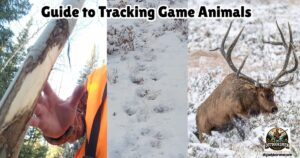
- DIY 4-Step Guide To Field Dressing And Quartering A Deer
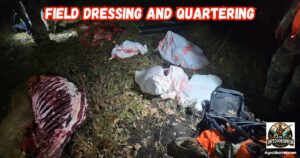
- Night Vision Binoculars For Nocturnal Hunting
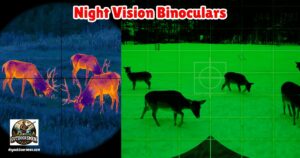
- The Science Behind Camouflage Patterns For Deer Hunting

- 9 Tips for Using Trail Cameras To Track Deer Movements

- Using A Game Processor Vs DIY Processing

As always, stay safe, enjoy the journey, and please try to leave it cleaner than you found it. If you have any comments, questions, ideas, or suggestions, please leave them in the comment section below, and I’ll get back to you ASAP. You can follow us on YouTube: Man Art Creations for videos of our DIY Adventures.
P.S. – Thanks so much for checking out our blog. We really appreciate it. Just so you know, we may receive a commission if you click on some of the links that appear on our site. This helps us keep our content free and up-to-date for everyone. We appreciate your support!
